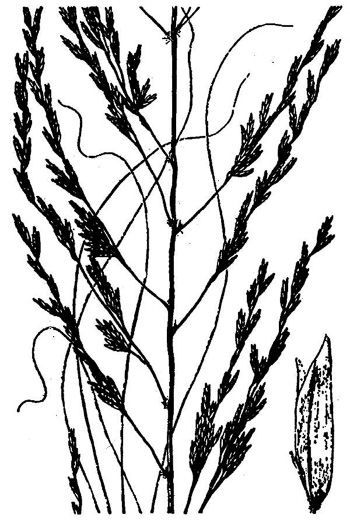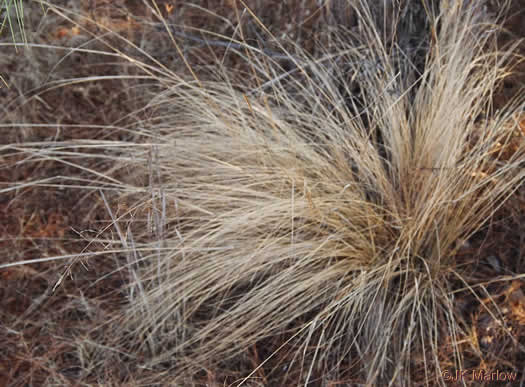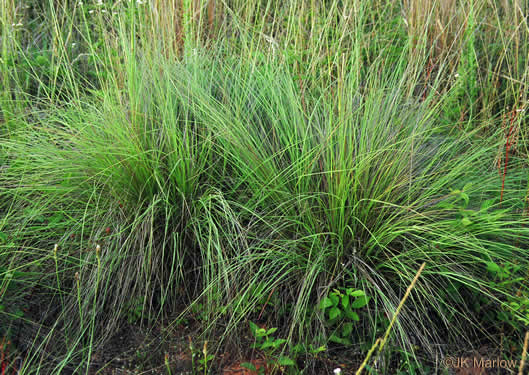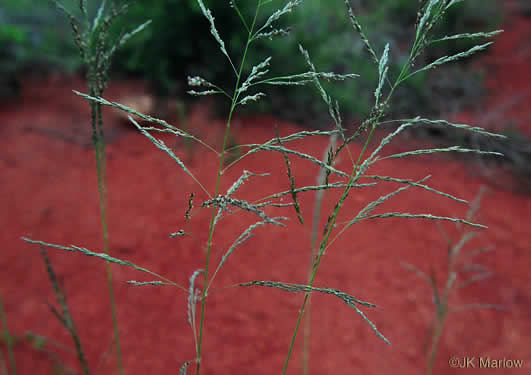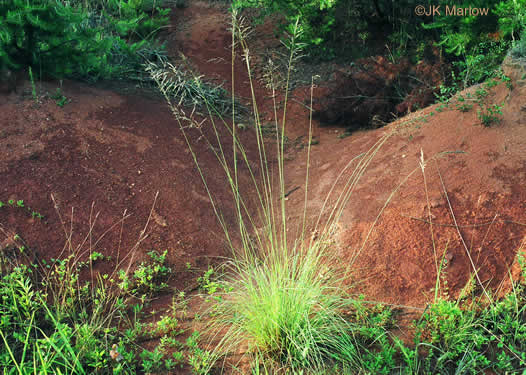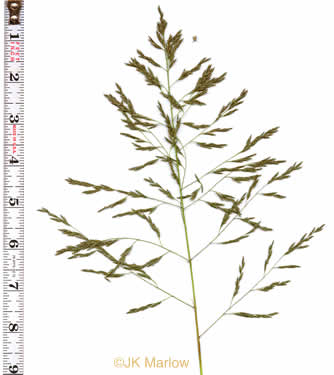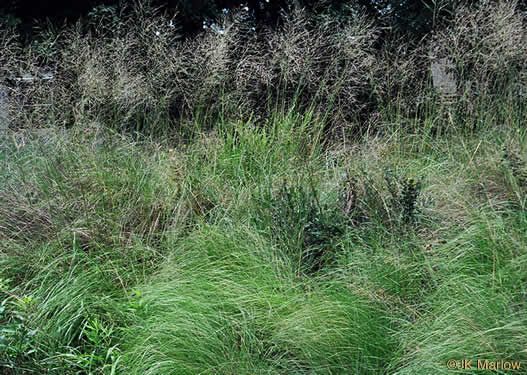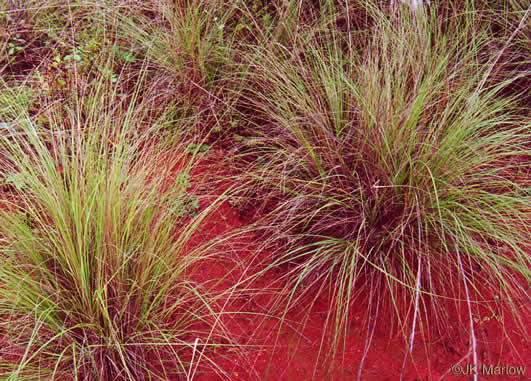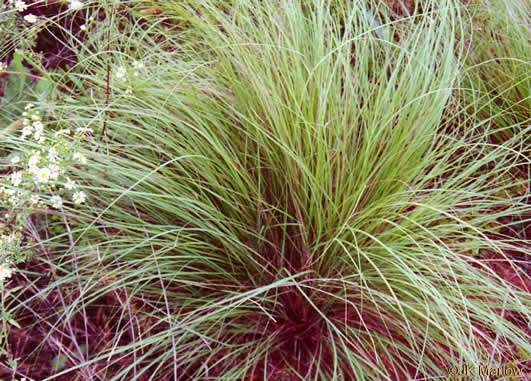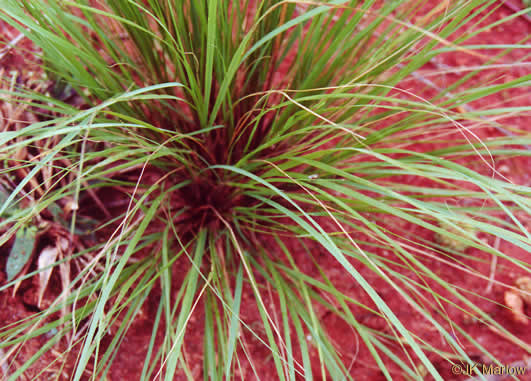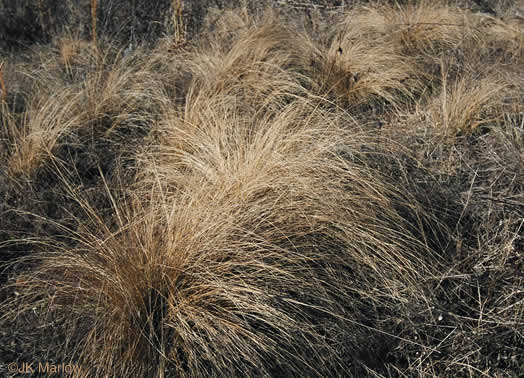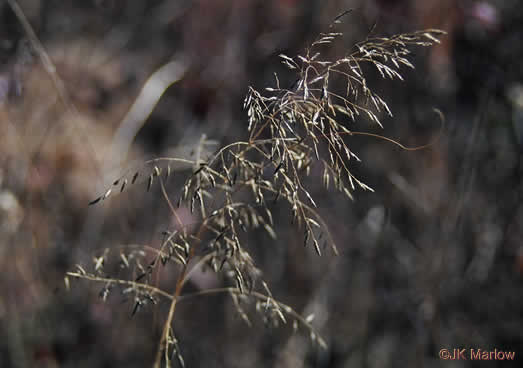Spermatophytes (seed plants): Angiosperms (flowering plants): Monocots: Commelinids: Poales
WEAKLEY'S FLORA OF THE SOUTHEASTERN US (4/24/22):
Eragrostis curvula
FAMILY
Poaceae
Go to FSUS key
Dig deeper at SERNEC, a consortium of southeastern herbaria.
Check out EDDMapS.org to see where this has been reported.
Learn more about Weeping Lovegrass from the Vascular Plants of North Carolina.
Very commonly planted as a roadbank stabilizer, E. curvula is fire resistant and shows some capability to spread into adjacent natural habitats, per Weakley's Flora (2022)
SYNONYMOUS WITH
PLANTS NATIONAL DATABASE:
Eragrostis curvula
FAMILY
Poaceae
SYNONYMOUS WITH Floristic Synthesis of North America. BONAP (Kartesz, 2021)
Eragrostis curvula
SYNONYMOUS WITH Flora of North America north of Mexico, vol. 25 (2003)
Eragrostis curvula
SYNONYMOUS WITH VASCULAR FLORA OF THE CAROLINAS (Radford, Ahles, & Bell, 1968) 029-11-007:
Eragrostis curvula FAMILY Poaceae
SYNONYMOUS WITH Manual of the Grasses of the US (Hitchcock & Chase, 1950)
Eragrostis curvula
COMMON NAME:
Weeping Lovegrass
To see larger pictures, click or hover over the thumbnails.
JK Marlow jkm0406d_08
June Greenville County SC
Roadside
Culms 60-120cm tall, densely tufted, erect, per Manual of the Grasses of the United States (Hitchcock & Chase, 1950).
JK Marlow s040604_a
June Greenville County SC
Roadside
Panicles 20-30cm long, branches solitary or in pairs, ascending, per Manual of the Grasses of the United States (Hitchcock & Chase, 1950).
JK Marlow jkm0407a_15
July Greenville County SC
Roadside
Commonly planted as a roadbank stabilizer, per Weakley's Flora.
JK Marlow jkm0210e_07a
October Greenville County SC
Utility right-of-way
Leaves greatly elongate, to 1m long, 1.5-3mm wide, per Vascular Flora of the Carolinas (Radford, Ahles, & Bell, 1968).
JK Marlow jkm0210e_09a
October Greenville County SC
Utility right-of-way
Blades elongate, involute, attenuate to a fine point, arcuate spreading, per Manual of the Grasses of the United States (Hitchcock & Chase, 1950).
JK Marlow jkm0312a_17
December Greenville County SC
Utility right-of-way
Is fire resistant and shows some capability to spread into natural habitats, per Weakley's Flora.
JK Marlow jkm0312a_27
December Greenville County SC
Utility right-of-way
Spikelets 7-11 flowered, 8-10mm long, gray-green, per Manual of the Grasses of the United States (Hitchcock & Chase, 1950).
WEAKLEY'S FLORA OF THE SOUTHEASTERN US (4/24/22):
Eragrostis curvula
FAMILY
Poaceae
SYNONYMOUS WITH
PLANTS NATIONAL DATABASE:
Eragrostis curvula
FAMILY
Poaceae
SYNONYMOUS WITH
Floristic Synthesis of North America. BONAP (Kartesz, 2021)
Eragrostis curvula
SYNONYMOUS WITH
Flora of North America north of Mexico, vol. 25
Eragrostis curvula
SYNONYMOUS WITH
VASCULAR FLORA OF THE CAROLINAS (Radford, Ahles, & Bell, 1968) 029-11-007:
Eragrostis curvula
FAMILY
Poaceae
SYNONYMOUS WITH
Manual of the Grasses of the US (Hitchcock & Chase, 1950)
Eragrostis curvula
If a search such as "Carex leptalea var. leptalea" doesn't deliver the results you want, try "Carex leptalea".
Or, to minimize chances of a misspelling, try just "Carex le".
Less is more: If "pencil flower" doesn't deliver the results you want, try "pencil".

